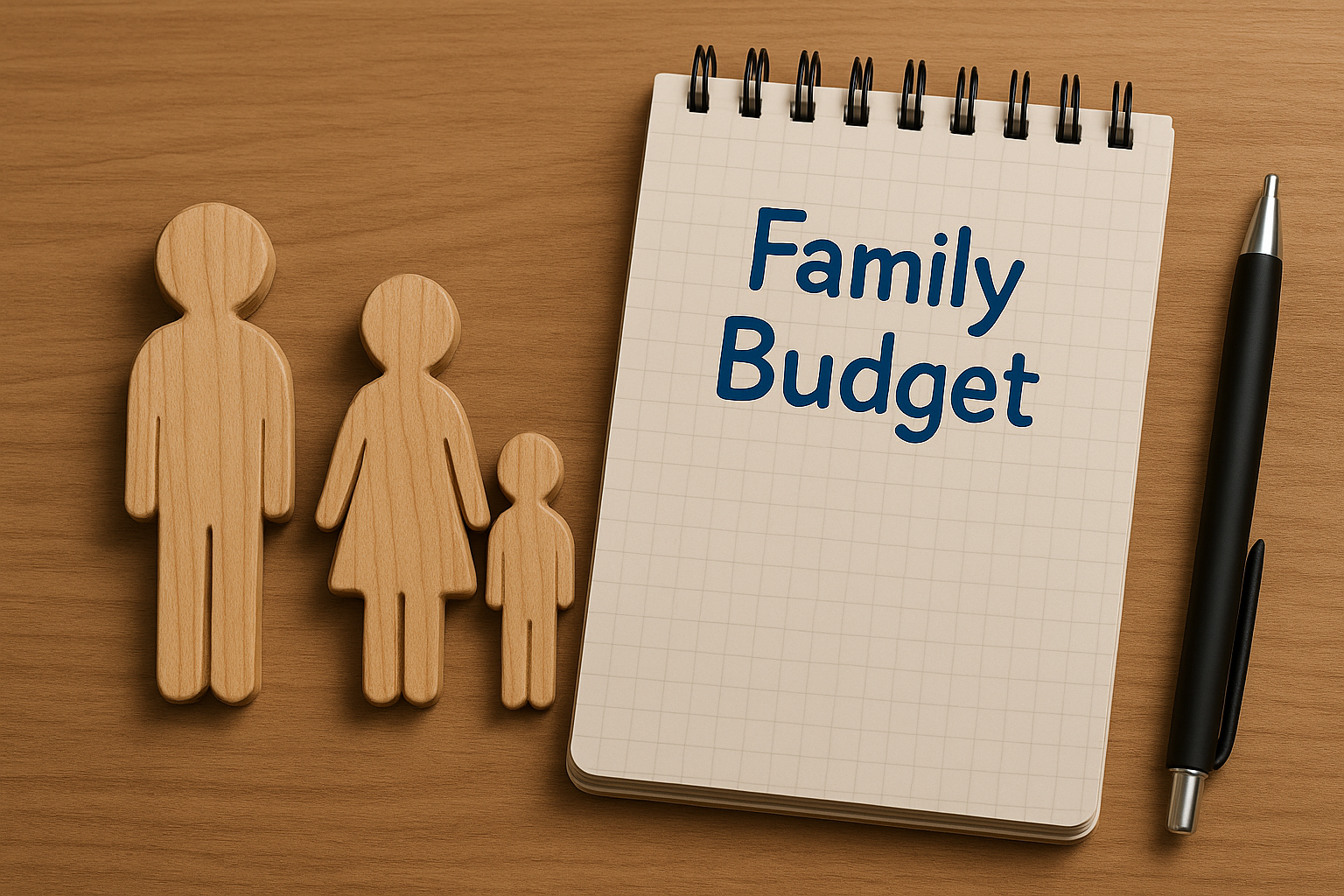Planning together is the first step toward financial peace
Talking about money is still a taboo in many homes. Some families avoid the topic to prevent conflict, while others think “kids don’t need to worry about that.” But the truth is, family budgeting only works when everyone is involved — consciously, responsibly, and actively.
When a family plans together, money goes further, goals are easier to reach, and decisions become more thoughtful. Best of all, working together on household finances teaches values like respect, cooperation, and accountability.
In this article, you’ll discover why and how to involve the entire family in household budgeting, with practical tips you can implement today to change the way your family manages money.
What is a family budget?
A family budget is a shared financial plan that tracks all sources of income and expenses within a household. It includes:
- Salaries and additional income
- Fixed bills (rent, electricity, water, internet, school fees)
- Groceries
- Transportation
- Leisure
- Health expenses
- Seasonal costs (taxes, school supplies, insurance)
- Debt payments
- Savings and investments
Having a clear budget allows families to know exactly how much comes in and how much goes out each month, reduce surprises, and make better financial decisions.
Why should everyone in the family be involved?
Involving the whole household is about more than just splitting bills. Here’s why it matters:
✅ Transparency
When everyone understands the household’s financial reality, there are fewer unrealistic expectations and more empathy.
✅ Shared commitment
Each person sees their role in the family’s financial health and contributes in their own way—by spending less or helping reach a savings goal.
✅ Financial education from an early age
Children and teens develop a lifelong understanding of responsibility, conscious spending, and goal-setting.
✅ Fewer conflicts
With clear goals and guidelines, family life becomes more cooperative and less stressful when it comes to money.
How to involve everyone in family budgeting
Ready to start planning together? Here’s how to turn budgeting into a family routine:
1. Talk about money openly and naturally
Start with a calm, honest conversation. Make it clear that talking about money is a sign of care—not crisis.
- Explain the goal of the discussion
- Make sure everyone feels heard
- Avoid blame or harsh judgments
- Use age-appropriate language, especially with kids
2. Have monthly family budget meetings
Make it a habit to hold a monthly family finance meeting to review spending, celebrate progress, and make adjustments. Keep it light and productive.
- Review last month’s expenses
- Project next month’s budget
- Reassess goals and priorities
- Take notes and keep the plan visible (board, sheet, app)
3. Set goals together
Shared goals give purpose to the budget. It could be a vacation, a new appliance, or paying off debt.
- Involve everyone in choosing the goals
- Set realistic deadlines
- Assign tasks (who saves, who researches prices, etc.)
- Track progress as a team
4. Assign age-appropriate responsibilities
Everyone can participate—even young kids.
- Kids: save coins in a jar, help at the grocery store, learn that not everything can be bought
- Teens: manage their own spending money, suggest ways to cut back
- Adults: track bills, compare prices, handle savings and investments
5. Use visual tools and technology
Make budgeting more interactive and easy to understand with:
- Shared spreadsheets (Google Sheets)
- Family finance apps like Organizze, Minhas Economias, or Mobills
- Whiteboards or paper charts in shared areas
- Games and apps that teach kids about money
6. Apply the 50/30/20 rule as a family
Use the classic method to divide household income:
- 50% for needs (fixed expenses)
- 30% for wants (leisure, gifts, comfort)
- 20% for financial priorities (savings, debt, investing)
Adapt this model to reflect your family’s reality and get everyone on the same page.
7. Create clear spending rules
To avoid unnecessary expenses and arguments, agree on a few basic rules:
- Weekly limit for takeout or delivery
- Energy-saving habits (TV, gaming time)
- Spending limits for birthday and holiday gifts
- Favor free or low-cost activities (parks, home movie nights)
What to do when someone resists the idea?
Not everyone will be excited at first. Here’s how to approach resistance:
- Listen to their concerns
- Start with small tasks — invite them to participate in one part of the process
- Show tangible benefits — like saving for something they really want
- Lead by example — show that budgeting brings freedom, not restrictions
What to avoid in family financial management
- Making decisions without listening to others
- Taking on all the responsibility alone
- Hiding financial problems
- Blaming or shaming others for overspending
- Keeping expenses secret from your partner or children
Transparency, empathy, and open communication are the keys to successful financial management at home.
Conclusion: budgeting is teamwork
Managing money shouldn’t fall on one person. It’s a matter of partnership, trust, and shared goals.
When everyone is involved, budgeting becomes less of a burden and more of a tool to build unity, peace of mind, and a better future.
Start today by planning your first family finance meeting — and turn money into a subject of cooperation, not conflict.
